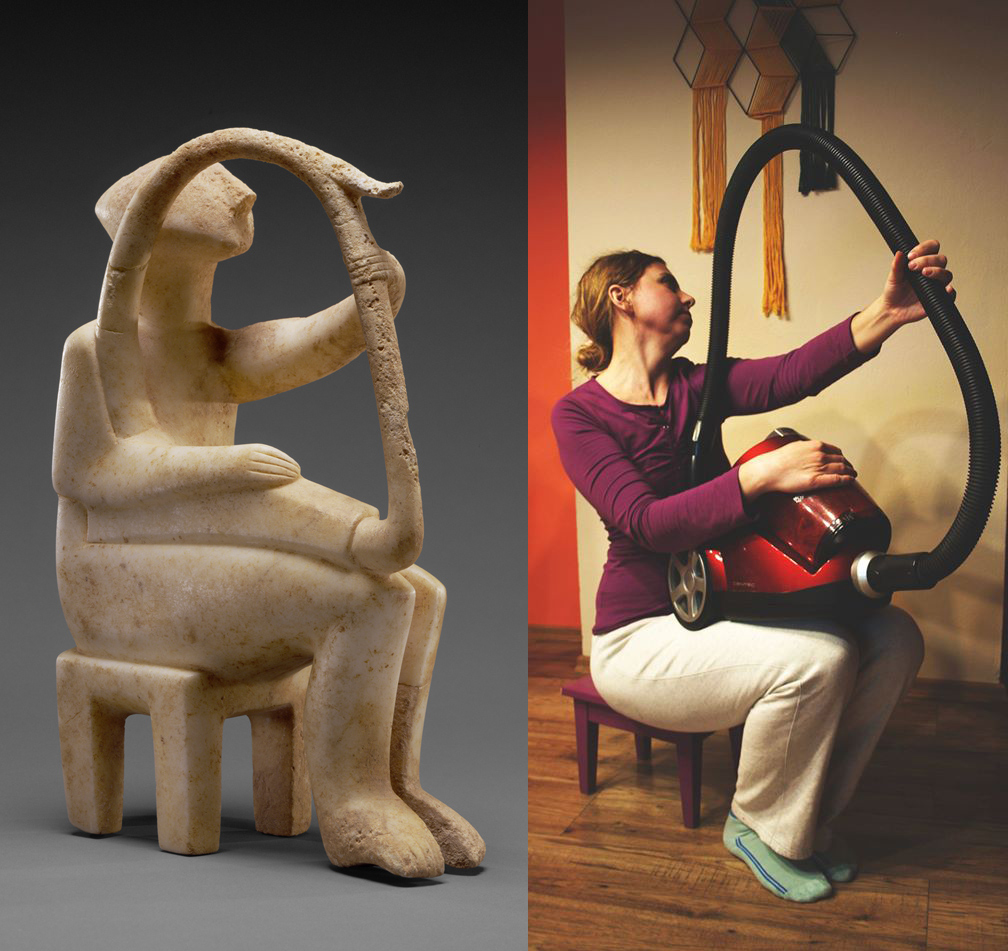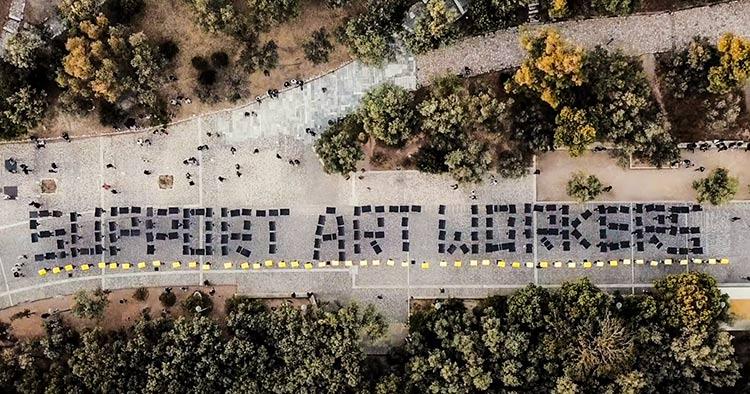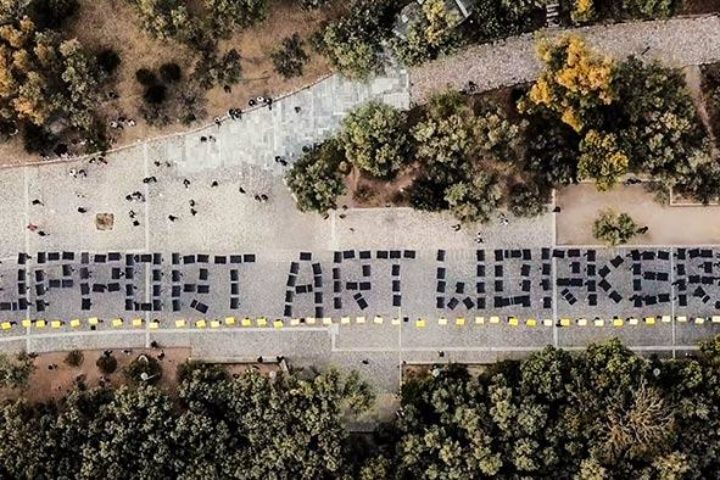
Elli Leventaki
MSc art historian and curator
Museums have no borders,
they have a network
July 8, 2020
Keywords: Digitization; Art professionals; Crisis; Precarity; Labour.
During these challenging times, it was a pleasant surprise to see museums, institutions, festivals and all kinds of art spaces remaining active, by figuring out alternatives for showcasing, promoting and sharing content using digital tools. However, amidst popular demand for remote access to art, many cultural institutions were abruptly forced to speed up their digitisation procedures or come up with imaginative online solutions, thus hoping to keep up with the rest of the world and maintain their audience’s interest.
Perhaps the most characteristic example was the Getty Museum Challenge, which went viral by inviting people to recreate famous artworks at home, a practice that has since been adopted by many museums around the world (Barnes 2020). Apart from using their social media platforms, art spaces also provided virtual tours of their venues, or freshened up their YouTube channels, by uploading brand-new videos. An example in Greece is the Onassis Foundation channel, which continued uploading new content throughout the quarantine.

Impact of digitisation on art professionals worldwide
Although these developments have been undeniably necessary and valuable updates for the future of the art field, which would otherwise have taken much longer to be carried out, it is important to also interpret them in a labour-oriented context. The current digitisation frenzy is already affecting art professionals worldwide, who are either pressured to come up with digital resources in record time, or to acquire further qualifications in order to cope with the increased demand.
At the same time, a significant number of their peers are being laid off, as even large institutions like MoMA, New York, find it hard to secure funding sources and ensure sustainability (Selvin 2020). As far as the situation in Europe is concerned, a recent survey conducted by the Network of European Museum Organisations (NEMO), revealed that a majority (73%) of museums reported having to reduce their expenses by reducing costs related to staff.
The Greek Case
In Greece in particular, the cultural sector is already experiencing a severe hit, which is also associated with reduced tourism. For many art spaces, galleries and even small museums, their very existence is currently at stake, as there are doubts as to whether some will be able to re-open in the post-lockdown phase. Meanwhile, Greek art professionals are asserting their labour rights through newly established networks, like Support Art Workers and Cultural Workers Alliance Greece, in order to demand countermeasures for their work loss by the state. The groups are self-organised by the art community and emerged as a reflex response to the government’s lack of provision for the cultural sector, in order to collectively claim their rights. Most of them have seen their upcoming projects cancelled one after another, while others have been working from home, without knowing if their work status will change, or whether they will be asked to undertake purely digital tasks when this is over.

Without losing sight of the objective, which is audience outreach, this hyper-digitisation trend is increasing the precarity of work conditions for art employees around the world and will most definitely have long-term effects on the nature of the services provided overall.
Acclaimed art historian and museologist, prof. M. Scaltsa, recently pointed out that digital programmes for culture focus 90% on digitisation itself and only 10% on the essence of what is being digitally conveyed (Scaltsa 2020), foreshadowing an ominous future for all professionals in arts and humanities. Hence, by limiting the perception of culture to its digital reproductions, a series of professional categories, such as educators, researchers, conservators and facilitators, will inevitably face extinction, and the quality of cultural production will eventually drop.
So, while appreciating the value of digital content, let’s argue for a balance between the volume of digitisation procedures in the art field and the required art-related labour for their implementation, since creating and transmitting art requires much more effort and commitment than what is reflected on a single digital asset or an online piece of information.
References and resources
Barnes, S. 2020. ‘People Recreate Works of Art With Objects Found at Home During Self-Quarantine’ My Modern Met
Scaltsa, M. 2020. ‘Globalization, museology and culture’ Avgi
Selvin, C. 2020. ‘MoMA Slashes Budget, Reduces Staff Ahead of Reopening: Report’ ARTnews
The Onassis Foundation channel
Protest-Representation of the group Support ART Workers, on 7th May in Athens, Greece
The main page of the Support Art Workers initiative on Facebook
The Cultural Workers Alliance Greece group on Facebook
Opinions expressed in the article do not commit ICOM in any way and are the responsibility of its author.
To participate in our newest ICOM Voices call for contributions, click here.
